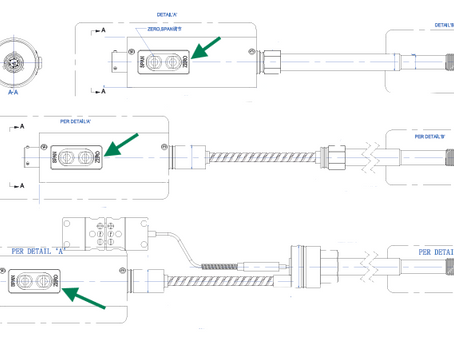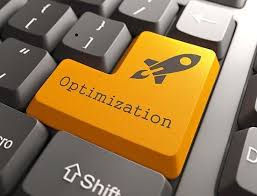top of page
PRESSURE CONTROL MADE SIMPLE

Search


PURCHASING | A Step-by-Step Guide to Transitioning from Procurement to Supplier Validation
This is piece is focused on pressure control products like Pressure Transducers and Burst Plugs that NNS supplies, but the framework can be used in any sourcing circumstances from MRO products to Capital Equipment. 1. Define Requirements with Cross-Functional Input Meet with process engineers, maintenance, and production supervisors before sourcing. Collect requirements beyond price: Sensor/material durability improvements (longer lifecycle, less downtime). Delivery expectat

Bob
Sep 102 min read


PURCHASING | Unlocking Cost Savings: The Advantages of Team Pricing Checks with New Suppliers
Some Costs of Not Checking Pricing Cumulative Price Creep Annual increases of just 3–5% compound quickly. Over 5 years, a $500 melt pressure transducer could end up at $600–$650 without competitive pressure. If you buy 20–30 units a year, that adds up to tens of thousands in hidden cost . Lost Leverage in Negotiation Suppliers often assume “set it and forget it” customers won’t benchmark prices. Without competition, they may stop offering discounts, bundled services, or stoc

Bob
Sep 102 min read


MAINTENANCE | Essential Steps for Melt Pressure Transducer Calibration
Quick Guide: Melt Pressure Transducer Calibration Audience: Maintenance Leadership Goal: Get the extruder back up fast with accurate...

Bob
Sep 52 min read


Comparing Span Adjustment Techniques: Magnetic Pens versus Adjustment Pots
Feature 🔹 Magnetic Pen Style 🔧 Adjustment Pot Style How It Works Non-contact span change using a magnetic tool on sensor housing Manual...

Bob
Sep 52 min read


Essential Steps and Frequency Tips for Preventative Melt Pressure Transducer Maintenance
1. Daily Checks Purpose: Catch early signs of issues before they affect production. A ctions: Visual inspection : Check for leaks,...

Bob
Sep 52 min read


Optimizing Extruder Performance with Pressure Transducers: Is It Worth Your Time?
Optimizing an extruder goes beyond speed and throughput—real improvements come from controlling what happens inside the barrel. Melt pressure transducers are a window to provide the visibility needed to monitor and fine-tune conditions in real time, directly influencing three critical areas: process stability, data accuracy, and overall optimization including energy efficiency. By including review of these sensors, process engineers gain the insight required to push perfor

Bob
Sep 52 min read


10 Key Considerations for Choosing a NEW Melt Pressure Transducer for Your Equipment
1. Pressure Range Must match the expected operating and maximum pressure in the extruder/die head. Too low → risk of sensor overloading and failure. Too high → poor resolution and less sensitive data. Typical extrusion: 0–5,000 psi (345 bar) to 0–30,000 psi (2,000 bar). 2. Temperature Rating The melt environment can exceed 300°C (570°F) depending on polymer type. Sensor must withstand tip temperature and have adequate thermal isolation for electronics. 3. Mounting Configura

Bob
Sep 52 min read


Boosting Reliability and Lifespan of Melt Pressure Transducers: 4 Essential Factors
For an extrusion process engineer, small improvements in equipment care can deliver big gains in reliability. Melt pressure transducers...

Bob
Sep 52 min read


ENGINEERS | How Temperature Sensors Work Inside Melt Pressure Transducers
If you measure pressure only now, is there a benefit to ADDING temperature as well? Why do people do it? How Temperature Sensors Work Inside Melt Pressure Transducers Most melt pressure transducers measure temperature via an integrated thermocouple or RTD (resistance temperature detector). Typical setup: The pressure diaphragm contacts the melt. Behind the diaphragm, a thermocouple tip or RTD element is embedded. This measures local melt temperature at the sensor location

Bob
Aug 302 min read


MAINTENANCE | When Melt Pressure Sensors Fail: A Maintenance Manager’s Quick Response Guide
In extrusion and molding, maintenance managers know that small parts cause big headaches when they go wrong. Melt pressure sensors are a perfect example. When these sensors drift, fail, or are installed incorrectly, the consequences show up fast: Scrap piles up because pressure readings are off. Product defects multiply when temperature or flow control goes unstable. Operators waste time chasing problems that are really sensor-driven. The result: lost output, rising costs

Bob
Aug 302 min read


PRODUCTION MANAGERS | Change Pressure Transducers / Transmitters for Color or Material Changes?
We get asked this often as part of a larger best practice type question. Here are some different factors to consider when faced with scheduled replacement of critical melt pressure sensors. Color Changes (Plastics or Food Dyes) Pigments and colorants don’t typically harm the diaphragm. Risk: some pigments are abrasive (e.g., titanium dioxide in white masterbatch), which can cause erosion of the diaphragm surface over long use. Action: No replacement needed. Clean diaphrag

Bob
Aug 302 min read


MAINTENANCE | ENGINEERING |What is Sensor Drift?
DEFINITION OF DRIFT : Sensor drift is a gradual deviation in the output signal of a transducer from the true pressure value, even though the actual process pressure remains constant Example: If a transducer is calibrated so that 0 psi = 4 mA, over time it might read 4.2 mA at 0 psi (indicating false pressure). That small shift can lead to hundreds of psi error at higher pressures. Causes of Sensor Drift in Melt Pressure Applications: High Temperature Effects Continuous exp

Bob
Aug 302 min read


MAINTENANCE | Melt Pressure Transducer/Transmitter Calibration Checklist
1. Tools & Equipment Needed NIST-traceable pressure calibrator (hydraulic hand pump + reference gauge, or deadweight tester) Temperature-controlled barrel/extruder (must be at normal operating temperature ) Multimeter or calibration reader (for mV/mA/V sensors) Portable calibrator/communicator (for smart transmitters w/ HART, Profibus, etc.) Clean lint-free wipes and approved cleaning tools for sensor port Calibration log sheet or digital CMMS entry system 2. Preparation ☐

Bob
Aug 302 min read


Why Mercury has been the Standard Fill Material for Melt Pressure Transducers
Mercury has historically been a standard fill material for melt pressure transducers in high-temperature extrusion processes,...

Bob
Aug 184 min read


What Do I Do If My Techs Use Pressure Transducers Like HANDLES and Break the Sensor Stem?
You first give the tech a stern look, shake your head, and THEN contact your friends at NoNonSensors sales@NoNonSensors.com and we’ll...

Bob
Aug 181 min read


Contributing Factors Causing Melt Pressure Transducer Diaphragm Failure
Melt pressure transducers are critical for monitoring extrusion processes, but their diaphragms are vulnerable to failure due to...

Bob
Aug 184 min read


How Do I Determine Overheating Is The Main Failure Reason for My Pressure Transducers?
To determine if overheating is the cause of your melt pressure transducer diaphragm failure, you need to assess operational conditions,...

Bob
Aug 184 min read


Working Principles of Rupture Disks (Burst Plugs) in Food and Plastics Extrusion Processes
Rupture disks, also known as burst plugs, are critical safety devices used in food and plastics extrusion processes to protect equipment,...

Bob
Aug 185 min read


Torque Specifications for Installing Melt Pressure Transducers and Burst Plugs
Proper torque is critical when installing melt pressure transducers and rupture disks (burst plugs) in food and plastics extrusion...

Bob
Aug 185 min read


Why Do You Need to Autozero a Melt Pressure Transducer?
Autozeroing a melt pressure transducer ensures accurate pressure readings by eliminating any signal offset when no pressure is applied....

Bob
Mar 222 min read
bottom of page
